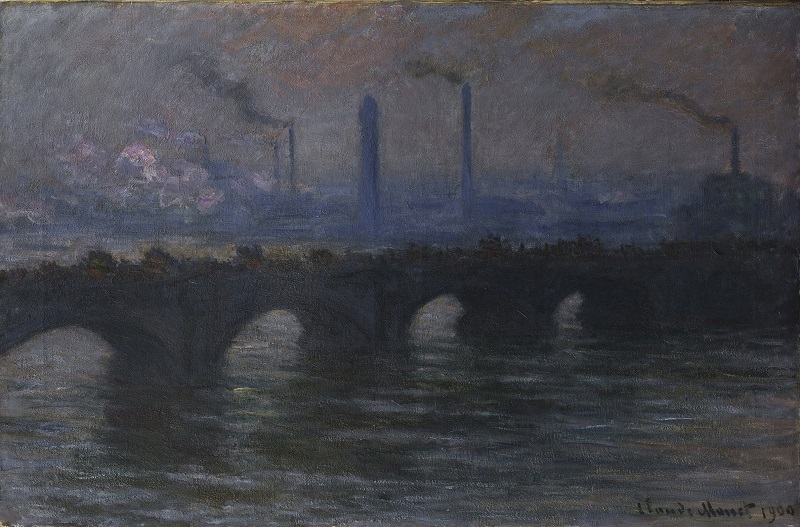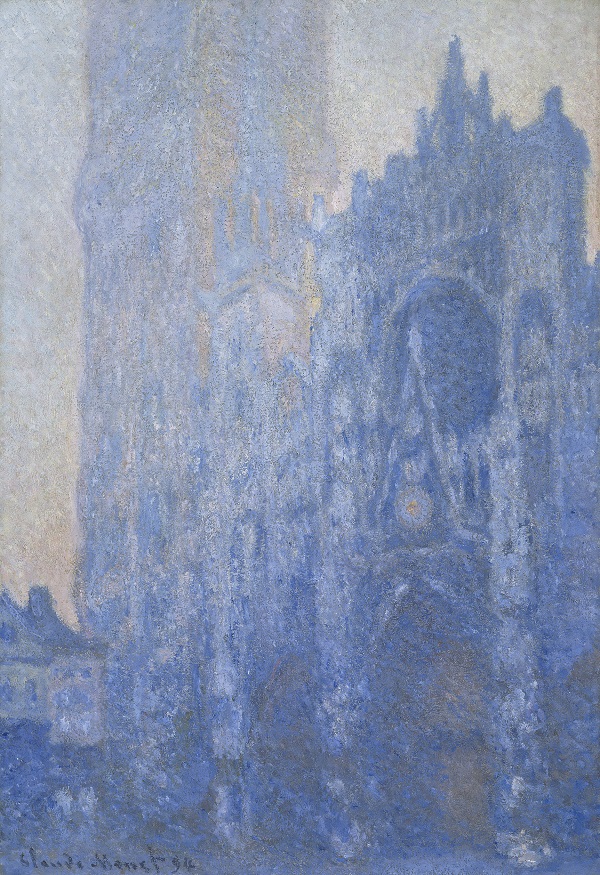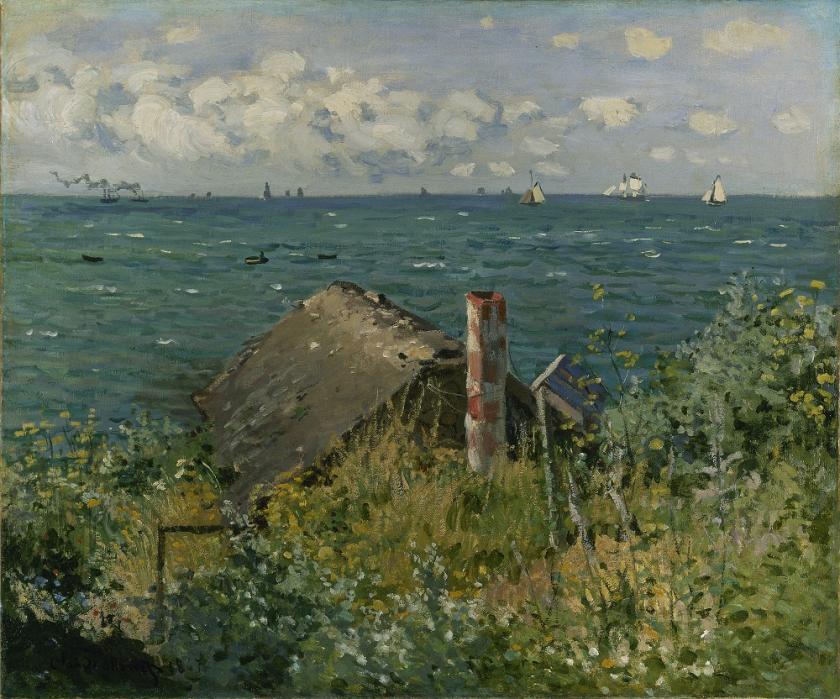Art historians can so easily get carried away looking for a thesis, a scaffolding on which to hang theories which can sometimes obscure as much as reveal. Not so here: as near perfect as might be imagined, this is a beautifully laid out, fresh look at a master painter, that lights up the National Gallery's basement exhibition space. For decades Monet has been the epitome of the blockbuster artist, but we take almost for granted the pleasure of looking at his incandescent paintings. He has become the feel-good painter par excellence. His paintings are gorgeous and sumptuous and long ago reached well beyond the specialist to a huge general public: just say his name and there are queues round the block.
Monet's late obsession with designing his garden seems to have been prefigured by the preoccupations revealed here, with buildings and other man-made structures used to anchor an exploration of landscape, seaside, riverside and city. The exhibition is arranged chronologically, as well as by subject, and the result is that the visitor witnesses Monet becoming Monet, and in unexpected ways. He was absorbed by the picturesque, painting villages in Normandy, a street in a suburb of Le Havre, a lane leading to a church, and windmills in Holland. The man-made emphasises and contrasts with variations in natural light, and his obsession with the vagaries of the sky and the reflections produced in canals and the open sea. The scenes are not dramatic, but very much of the day-to-day. His views were both accurate yet also carefully edited, emphasising what caught his eye and eliminating distractions. The charming, the attractive, the readily accessible and the everyday – not to mention what appears to be his real subject, the evanescent, volatile nature of changing light, the notion of time passing, and time captured – is anchored in Windmills Near Zaandam, 1871, by the almost wholly man-made environment of Holland, or in The Hut at Sante-Adresse, 1867 (main picture), the fisherman’s shack on the coast, paintings both made when Monet was still in his twenties.
His views were both accurate yet also carefully edited, emphasising what caught his eye and eliminating distractions. The charming, the attractive, the readily accessible and the everyday – not to mention what appears to be his real subject, the evanescent, volatile nature of changing light, the notion of time passing, and time captured – is anchored in Windmills Near Zaandam, 1871, by the almost wholly man-made environment of Holland, or in The Hut at Sante-Adresse, 1867 (main picture), the fisherman’s shack on the coast, paintings both made when Monet was still in his twenties.
He played with the built environment and natural surroundings, and from the townscape of Houses on the Banks of the Zaan, Zaandam, to the splendours of Venice, his preoccupations were consistent from his very beginning, as he moved from distant vistas to the late colour explosions of Giverny’s waterlilies. As the decades pass the obvious and the bold is subsumed by the elusive and the subtle, from the charmingly familiar sequence of comfortable hotels on the seaside at Trouville – opened up to the bourgeoisie by the railroad – to the shimmering Thames and Waterloo Bridge: his fascination with the visual effects of the notorious fogs of London is well documented. (Pictured above: Waterloo Bridge, Overcast Weather,1899-1903)
 What is also apparent is the way in which his use of paint changes markedly. What in the earlier work is almost literal, a scaffolding of horizontal, diagonal and vertical brushstrokes, becomes in later works far freer, with solid forms appearing almost as ghosts in unexpected shimmers of paint, careful delineation abandoned for evocative atmosphere.
What is also apparent is the way in which his use of paint changes markedly. What in the earlier work is almost literal, a scaffolding of horizontal, diagonal and vertical brushstrokes, becomes in later works far freer, with solid forms appearing almost as ghosts in unexpected shimmers of paint, careful delineation abandoned for evocative atmosphere.
Although Monet never looked for painstaking accuracy in his use of buildings as subjects, the man-made scene was of absorbing interest in providing an armature for his passion for portraying atmosphere and light. His literal depictions dissolve in recognisable images which suggest movement and change. We are offered superb examples from the great sequences involving, say, Rouen Cathedral, the Doges' Palace in Venice, that city’s San Giorgio Maggiore, Waterloo Bridge, the Gare St Lazare in Paris, replete with the steam from the locomotives and the bustle of all those dwarfed black stick figures of the human crowd seen from above in the Boulevard des Capucines, and the street celebrations on the rue Montogeuil. (Pictured right: Rouen Cathedral. The Portal and the Tour d'Albane at Dawn, 1893-4)
As he moves from defined brush strokes to screens of colour, interesting perspectives and layered geometries, we can see too how original and adventurous he is. This exhibition is not only a marvellous pleasure, but a revelation, one that deepens our appreciative understanding. That memorable remark by Cézanne – that Monet was only an eye, but what an eye! – is only a partial truth: it is the mind behind the eye that captivates.
- Monet & Architecture at the National Gallery to 29 July
- Read more visual arts reviews on theartsdesk









![SEX MONEY RACE RELIGION [2016] by Gilbert and George. Installation shot of Gilbert & George 21ST CENTURY PICTURES Hayward Gallery](/sites/default/files/styles/thumbnail_125_x_125_/public/mastimages/Gilbert%20%26%20George_%2021ST%20CENTURY%20PICTURES.%20SEX%20MONEY%20RACE%20RELIGION%20%5B2016%5D.%20Photo_%20Mark%20Blower.%20Courtesy%20of%20the%20Gilbert%20%26%20George%20and%20the%20Hayward%20Gallery._0.jpg?itok=3oW-Y84i)





Add comment